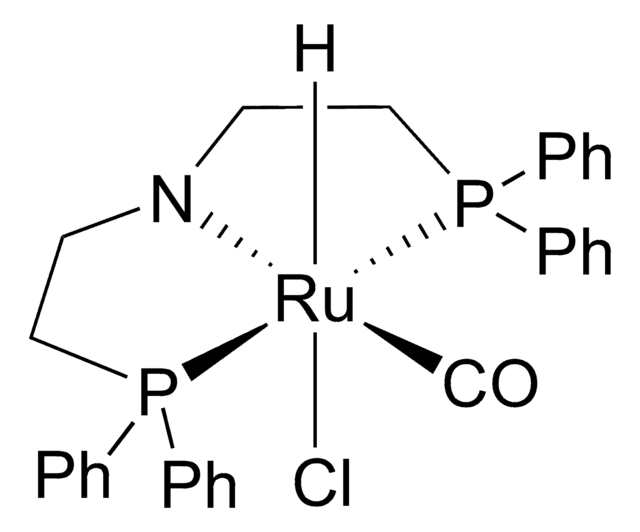Wichtige Dokumente
701920
2-((Di-tert-butylphosphinomethyl)-6-diethylaminomethyl)pyridin
Synonym(e):
PNN
Größe auswählen
About This Item
Empfohlene Produkte
Form
liquid
Qualitätsniveau
Eignung der Reaktion
reaction type: Buchwald-Hartwig Cross Coupling Reaction
reaction type: Heck Reaction
reaction type: Hiyama Coupling
reaction type: Negishi Coupling
reaction type: Sonogashira Coupling
reaction type: Stille Coupling
reaction type: Suzuki-Miyaura Coupling
reagent type: ligand
Brechungsindex
n20/D 1.519
Dichte
0.936 g/mL at 25 °C
Funktionelle Gruppe
phosphine
SMILES String
CCN(CC)Cc1cccc(CP(C(C)(C)C)C(C)(C)C)n1
InChI
1S/C19H35N2P/c1-9-21(10-2)14-16-12-11-13-17(20-16)15-22(18(3,4)5)19(6,7)8/h11-13H,9-10,14-15H2,1-8H3
InChIKey
MTBWGMDPQBSPGF-UHFFFAOYSA-N
Verwandte Kategorien
Signalwort
Warning
H-Sätze
Gefahreneinstufungen
Aquatic Chronic 4 - Eye Irrit. 2 - Skin Irrit. 2 - STOT SE 3 - Water-react 3
Zielorgane
Respiratory system
Lagerklassenschlüssel
4.3 - Hazardous materials which set free flammable gases upon contact with water
WGK
WGK 3
Flammpunkt (°F)
154.0 °F
Flammpunkt (°C)
67.8 °C
Persönliche Schutzausrüstung
Eyeshields, Faceshields, Gloves, type ABEK (EN14387) respirator filter
Hier finden Sie alle aktuellen Versionen:
Analysenzertifikate (COA)
Die passende Version wird nicht angezeigt?
Wenn Sie eine bestimmte Version benötigen, können Sie anhand der Lot- oder Chargennummer nach einem spezifischen Zertifikat suchen.
Besitzen Sie dieses Produkt bereits?
In der Dokumentenbibliothek finden Sie die Dokumentation zu den Produkten, die Sie kürzlich erworben haben.
Active Filters
Unser Team von Wissenschaftlern verfügt über Erfahrung in allen Forschungsbereichen einschließlich Life Science, Materialwissenschaften, chemischer Synthese, Chromatographie, Analytik und vielen mehr..
Setzen Sie sich mit dem technischen Dienst in Verbindung.










